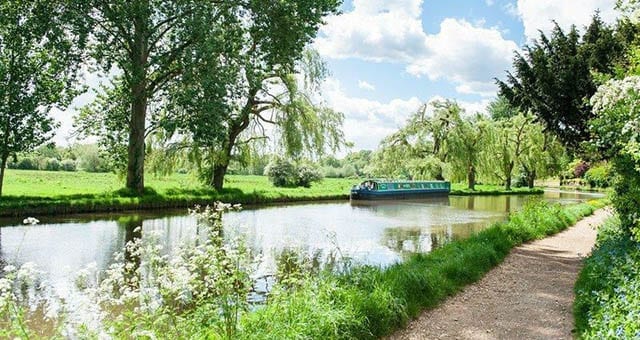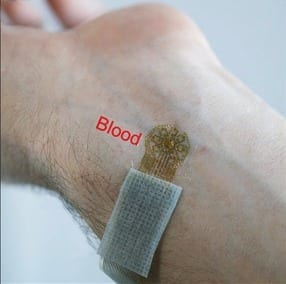
Credit: Worden Sports College. Wellcome Images
It’s a hidden global change: away from the public eye, residues of medicines in water have been causing increasing disruption. They can kill aquatic animals, and play havoc with their food web and reproductive cycle. An international team of researchers led by the NIOO makes an urgent case for better wastewater treatment and biodegradable pharmaceuticals.
Algae that are becoming far less edible for water fleas and fish, leaving them to starve. Aquatic animals undergoing unwanted sex changes. And fish on their annual run struggling to locate their spawning ground. These are some of the disruptive effects of pharmaceutical residues on the aquatic environment.
“Chemical substances from pharmaceuticals wreak havoc on underwater chemical communication”, says the head of the NIOO’s department of Aquatic Ecology, Ellen van Donk. She’s been heading a team of Dutch, German and US researchers, who take stock of the problem in the next issue of Reviews of Environmental Contamination and Toxicology. “The effects are becoming more and more visible in lakes and ponds worldwide, if you know what to look for.”
Smellscape
Unnoticeable to most people, there’s an endless stream of ‘chatter’ going on below the water’s surface. Most of that chatter takes the form of infochemicals: chemical substances released by aquatic plants and animals that travel through the water. Just think of the scent of a water flea that is picked up by a fish.
Aquatic organisms depend on this intricate ‘smellscape’ of information to locate mates and food, and to steer clear of natural enemies. But even low concentrations of pharmaceutical compounds can have a huge impact. “Some of these substances may closely resemble natural infochemicals”, explains Van Donk, “so they may unintentionally trigger a similar reaction. Or they could do just the opposite and block vital communications.”
Increase
Ever larger amounts of pharmaceutical residues, such as female hormones from the contraceptive pill, have been finding their way into the water – through urination by humans and livestock. These residues are not easily biodegradable, and sewage treatment plants are not equipped to remove them.
“There are no hard figures”, says Van Donk, “but surface water measurements suggest that concentrations of residues from hormones, anti-depressants and painkillers have in fact increased substantially.”
Solutions
The best way to fight this insidious global change, according to Van Donk and her team, is to find more effective wastewater treatment methods. “In addition, we should look at how pharmaceuticals can be processed better by the human body.” It may, for instance, be possible to make pharmaceuticals biodegradable or to absorb them completely.
“At the NIOO, we have been experimenting with an alternative wastewater treatment method that makes use of micro-organisms and algae”, adds Van Donk. “This method is allowing us to recycle valuable so-called ‘waste’ materials, and we’re now investigating if it could also help us break down pharmaceutical residues more successfully.”
Read more: Pharmaceutical residues increasingly disrupt aquatic life
The Latest on: Pharmaceutical residues
[google_news title=”” keyword=”Pharmaceutical residues” num_posts=”10″ blurb_length=”0″ show_thumb=”left”]
via Google News
The Latest on: Pharmaceutical residues
- Police: Muncie man provided co-worker with fentanyl pill that led to fatal overdoseon May 1, 2024 at 5:39 am
A witness told investigators the Anderson man had been trading cocaine — with a co-worker at the CANPACK plant in Muncie — in exchange for the pills.
- Over 40,000 kg of Chinese dried chili with excessive pesticide residue seized at Taiwan borderon April 30, 2024 at 10:18 am
Three shipments of dried chili imported from China totaling 41,040 kilograms were recently intercepted at Taiwan border after being found to contain excessive ...
- Docs: Man died after receiving counterfeit, fentanyl-laced pills from Muncie drug dealeron April 29, 2024 at 1:10 pm
A Muncie man has been arrested for dealing counterfeit, fentanyl-laced pills that are believed to have caused a man’s death. According to an affidavit for probable cause released on Monday, officers ...
- Man who tries to help save vehicle on fire pleads not guilty to drug possession chargeon April 23, 2024 at 9:05 pm
A man who tried to help save a vehicle on fire early last month pleaded not guilty to charges of possession of methamphetamine during an arraignment hearing on Tuesday in ...
- Lima man sentenced on coke, meth chargeson April 23, 2024 at 5:00 pm
Items recovered during the search included digital scales covered in suspected drug residue, drug paraphernalia and clear plastic bags containing approximately 26 grams of suspected cocaine.
- UK researchers extract drug residue from gel-lifted fingerprint biometricson April 23, 2024 at 9:16 am
A team of analytical scientists has demonstrated, for the first time, how to detect drug residue on gel-lifted fingerprints.
- Drug residue can be detected in fingerprints left at crime sceneson April 22, 2024 at 6:00 am
Forensic investigators can reliably measure drug and explosive residue using gels that lift fingerprint samples ...
- Advance in forensic fingerprint research provides new hope for cold caseson April 21, 2024 at 5:00 pm
More information: Ayoung Kim et al, A direct analysis method using sheath flow probe electrospray ionisation‐mass spectrometry (sfPESI‐MS) to detect drug residues from fingerprint forensic gel ...
- Spokane drug trafficker sentenced, possessed 1,750 fentanyl pills and methon April 19, 2024 at 12:14 pm
SPOKANE, Wash. - A Spokane man was sentenced after 1,750 fentanyl pills and over 100 grams of meth were found in his possession.
- Slidell man indicted in 2-year-old girl’s drug-related deathon April 18, 2024 at 1:02 pm
During a search of the home, deputies said they found paraphernalia with drug residue. Baker was originally booked into the St. Tammany Parish Correctional Center on charges of second-degree ...
via Bing News









